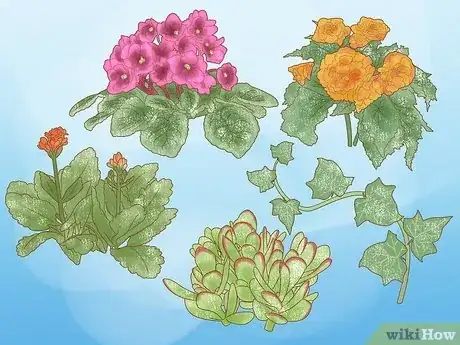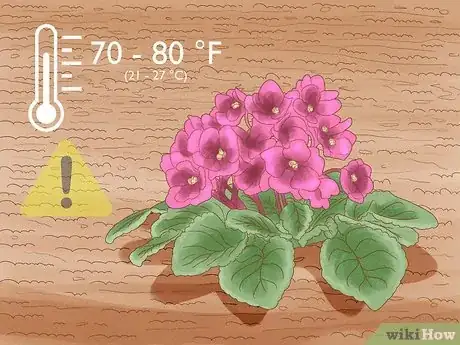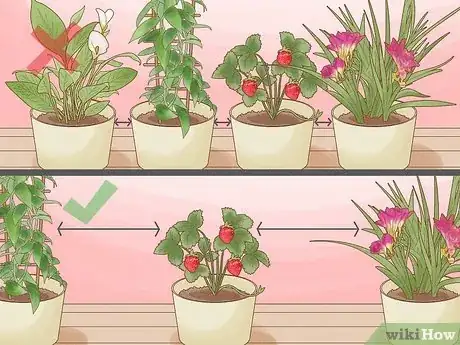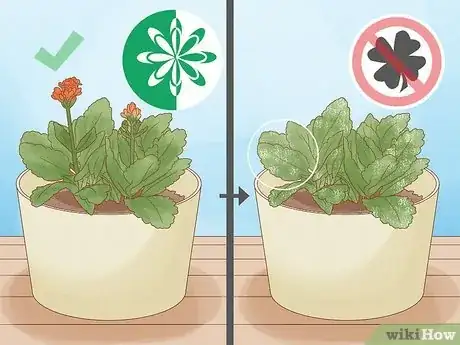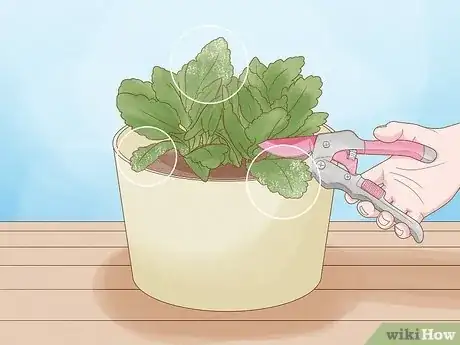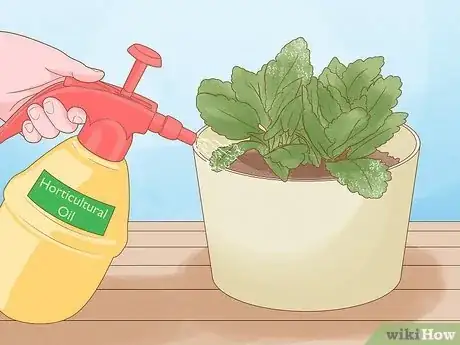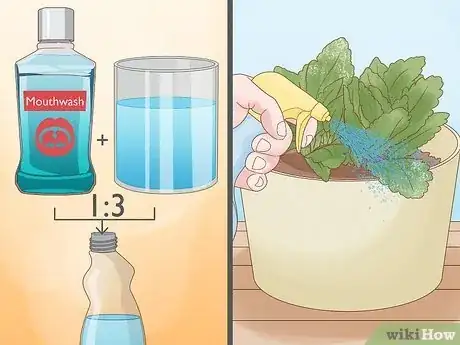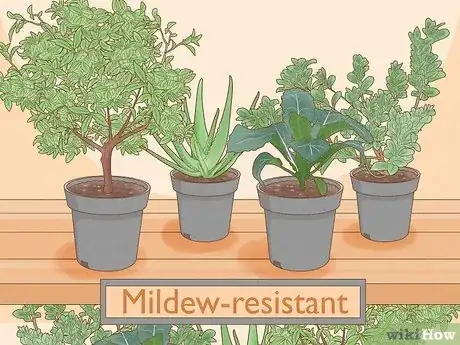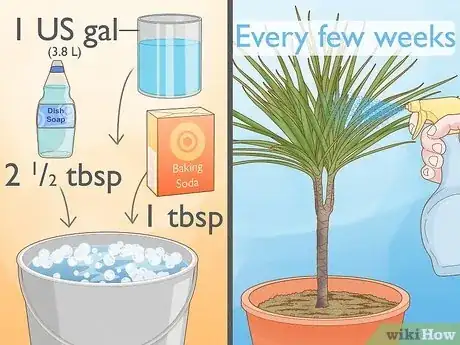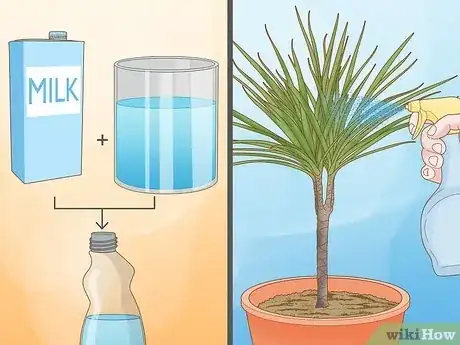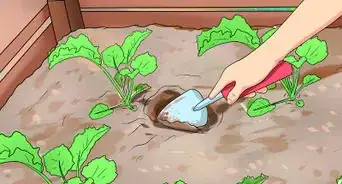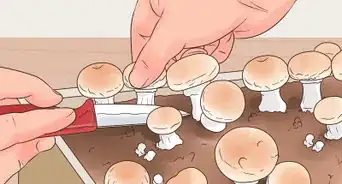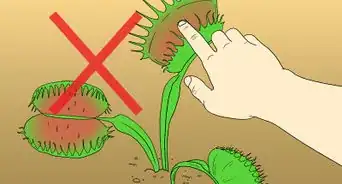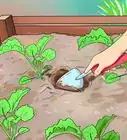This article was co-authored by Artemisia Nursery and by wikiHow staff writer, Jessica Gibson. Artemisia Nursery is a retail plant nursery in Northeast Los Angeles specializing in California native plants. Artemisia Nursery is a worker-owned small business with plans to become a worker-owned cooperative. In addition to California native plants, Artemisia Nursery offers a selection of succulents, heirloom veggie and herb starts, house plants, pottery, and gardening tools and supplies. Drawing on the knowledge of the founders, Artemisia Nursery also offers consultations, designs, and installations.
There are 11 references cited in this article, which can be found at the bottom of the page.
This article has been viewed 8,432 times.
It's frustrating to look over and see powdery white spots on your houseplant or in your garden. You might be concerned that it's harming your plants or that it will prevent fruit or vegetables from growing. Fortunately, you can easily manage this common garden nuisance so your plants will thrive. Keep reading to find out why your plant has white spots, which condition causes it, what you can do to help your plants, and how to prevent white spots in the first place.
Steps
Expert Q&A
-
QuestionWill apple cider vinegar kill powdery mildew?
 Artemisia NurseryArtemisia Nursery is a retail plant nursery in Northeast Los Angeles specializing in California native plants. Artemisia Nursery is a worker-owned small business with plans to become a worker-owned cooperative. In addition to California native plants, Artemisia Nursery offers a selection of succulents, heirloom veggie and herb starts, house plants, pottery, and gardening tools and supplies. Drawing on the knowledge of the founders, Artemisia Nursery also offers consultations, designs, and installations.
Artemisia NurseryArtemisia Nursery is a retail plant nursery in Northeast Los Angeles specializing in California native plants. Artemisia Nursery is a worker-owned small business with plans to become a worker-owned cooperative. In addition to California native plants, Artemisia Nursery offers a selection of succulents, heirloom veggie and herb starts, house plants, pottery, and gardening tools and supplies. Drawing on the knowledge of the founders, Artemisia Nursery also offers consultations, designs, and installations.
Plant Nursery & Garden Shop Some people have had success with apple cider vinegar! Other people have used white vinegar, as well as a soapy water and alcohol mixture. The key is consistently applying it to the affected plant every night.
Some people have had success with apple cider vinegar! Other people have used white vinegar, as well as a soapy water and alcohol mixture. The key is consistently applying it to the affected plant every night.
References
- ↑ https://extension.umn.edu/plant-diseases/powdery-mildew-flower-garden
- ↑ https://www.missouribotanicalgarden.org/gardens-gardening/your-garden/help-for-the-home-gardener/advice-tips-resources/pests-and-problems/diseases/powdery-mildew/powdery-mildew-indoors.aspx
- ↑ https://extension.psu.edu/powdery-mildew
- ↑ https://agrilifeextension.tamu.edu/library/landscaping/powdery-mildew-of-roses/
- ↑ https://www2.ipm.ucanr.edu/agriculture/floriculture-and-ornamental-nurseries/Powdery-mildew/
- ↑ https://extension.psu.edu/powdery-mildew
- ↑ https://todayshomeowner.com/how-to-control-powdery-mildew-in-your-yard/
- ↑ http://ipm.ucanr.edu/PMG/PESTNOTES/pn7406.html
- ↑ https://www.vernonmorningstar.com/life/gardeners-diary-overcoming-powdery-mildew/
- ↑ https://www.missouribotanicalgarden.org/gardens-gardening/your-garden/help-for-the-home-gardener/advice-tips-resources/pests-and-problems/diseases/powdery-mildew/powdery-mildew-indoors.aspx
- ↑ http://ipm.ucanr.edu/PMG/PESTNOTES/pn7406.html
- ↑ https://www.growingformarket.com/articles/powdery-mildew-solutions
- ↑ https://s3.wp.wsu.edu/uploads/sites/403/2015/03/milk-and-roses.pdf
